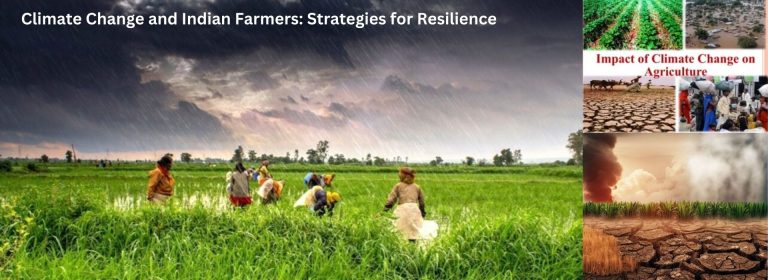Three decades ago, Professor Martine Vrijheid was investigating the prevalence of birth defects near hazardous waste sites across Europe as part of her PhD work. She found that there was indeed an increased risk close to dumps.
Her study, done at the London School of Hygiene and Tropical Medicine in the UK, raised more questions.
Child focus
‘One of the big questions I was asked when we published these results was: “What would you do if you were pregnant?”,’ said Vrijheid, a Dutch native who is now a professor of environmental and child health at the Barcelona Institute for Global Health in Spain. ‘I couldn’t really answer that question and so I thought we really need much better data to give better recommendations to women during their pregnancy.’
Ever since then, Vrijheid has focused on how the environment in which children grow up can damage their health.
The combination of environmental influences and how the body reacts to them is called the exposome. It factors in what people eat and do, where they live and work and how they interact with their physical surroundings.
Everything from exposure to toxic chemicals to weather changes is included. The environment accounts for an estimated 70% of the chronic disease burden on people, with air pollution from fossil fuels burned by factories, power plants, cars and buildings being a leading cause.
For example, a third of childhood asthma cases in Europe can be attributed to polluted air, according to the Barcelona Institute for Global Health, also known as ISGlobal.
‘We know that, for a large proportion of our non-communicable or chronic diseases, there are preventable causes in the environment,’ Vrijheid said.
She coordinates a research project that received EU funding to quantify how the exposome affects the health of people in Europe during their first 20 years of life. Called ATHLETE, the five-year project runs until the end of 2024.
Early signals
ATHLETE focuses on young people in order to reduce their overall chances of getting sick.
‘It’s much more efficient to start prevention in children or pregnancy than to address risk factors when people are older and already on the way to becoming ill,’ said Vrijheid. ‘Anything that happens in those very early years can have consequences later in life.’
Take the organ growth of a foetus. Exposure to certain chemicals during pregnancy can impede organ development.
Researchers use blood, urine and stool samples to detect biological markers such as metabolites, which are molecules required for the normal functioning of cells. The goal is to join the dots between environmental influences and child health.
The project has already found that exposure to pollutants early in life can create changes in the biological markers of children who are otherwise healthy, according to Vrijheid.
“For a large proportion of our non-communicable or chronic diseases, there are preventable causes in the environment.”
Professor Martine Vrijheid, ATHLETE
For example, child exposure to copper was associated with an inflammation marker. Plausible mechanisms of disease were also found for other pollutants including tobacco smoke and parabens, which are chemicals used as preservatives in cosmetics.
‘Even if children don’t show any symptoms yet, if you can see that there are changes in their everyday genetics – or in their protein profiles – that may tell us something about their future risk of disease,’ Vrijheid said.
The overall aim of ATHLETE is to build up data and make the information available to researchers.
Through various studies, the project will lead to guidance on priority actions to monitor and limit exposure to pollutants. Part of this work includes developing a guidance ‘‘toolkit’’ for decision-makers and communities.
Depending on the study results, Vrijheid said recommendations for future policies could also emerge.
Sets of risks
ATHLETE is among nine research projects seeking advances in the field as part of the European Human Exposome Network, or EHEN, the world’s largest such undertaking with 24 countries.
The exposome approach goes beyond tackling environmental pollutants one by one and instead seeks to address them as a whole based on a clearer picture of the interconnections.
In the framework of ATHLETE, a study in France is assessing whether changes in women’s personal care products could affect exposure to chemicals such as phthalates that interfere with the hormonal system – so-called endocrine disruptors.
In total, 90 female volunteers aged 18 to 30 years are replacing commonly used cosmetics with alternatives for five days. With the help of urine samples taken before and after the trial, the study aims to show that reducing or changing the use of personal care items can reduce the presence of chemicals in the body.
In a further example, ATHLETE is examining the number of chemicals in pesticides, food packaging and other products that are features of everyday life in Europe.
‘We hope that the exposome framework will help to provide evidence on sets of risk factors that can be tackled at the same time – for example by tackling mixtures of chemicals rather than one-by-one regulation,’ said Vrijheid.
Urban clues
Another of the EHEN projects is the EU-funded EXPANSE, which focuses on urban environments because most people in Europe live there.
By the end of the decade, more than 80% of Europe’s population will live in and interact with an urban environment, according to the project.
“We really need to have a global effort to understand environmental exposures.”
Professor Roel Vermeulen, EXPANSE
‘Cities or urban environments are hugely important for human health,’ said Roel Vermeulen, who leads EXPANSE and is a professor of environmental epidemiology at Utrecht University in the Netherlands.
Like ATHLETE, Vermeulen’s project began in January 2020 and is scheduled to run until the end of 2024.
His team has been mapping the entire urban environment in Europe to get a better picture of the wide array of factors – from air pollution to foods – to which people are exposed.
The researchers use health data from across the EU, census information covering around 55 million people and specific groups of adults and children numbering around 2 million.
On top of that, the team is giving people sensors to measure exposure to environmental pollutants and track physical activity.
In total, 4 000 people have been selected for this “urban labs” exercise in Greece, Italy, the Netherlands, Poland and Switzerland.
‘EXPANSE will be able to advise on how neighbourhoods can be made healthier,’ said Vermeulen.
Body barometers
The project’s focus extends to the internal exposome: measuring levels of chemicals including flame retardants, pesticides and persistent pollutants in the body.
This allows the team to examine people who have developed an illness like diabetes later in life and to look out for chemical differences with healthy people.
‘We have their blood samples 10 years before they developed the disease and we look at what was different in the blood between these two populations,’ said Vermeulen.
Part of what motivates him is his life among the cobbled streets and canals of Utrecht, particularly differences in the health of people depending on their specific neighbourhood.
Vermeulen said that people in the healthiest district enjoy as many as 12 years more good health than residents elsewhere in the city do.
Understanding the exposome will make it easier to eliminate these sorts of discrepancies.
‘The postcode is more important than the genetic code,’ said Vermeulen. ‘We really need to have a global effort to understand environmental exposures and to actually come up with meaningful interventions to stop non-communicable diseases.’
Research in this article was funded by the EU. This article was originally published in Horizon, the EU Research and Innovation magazine



